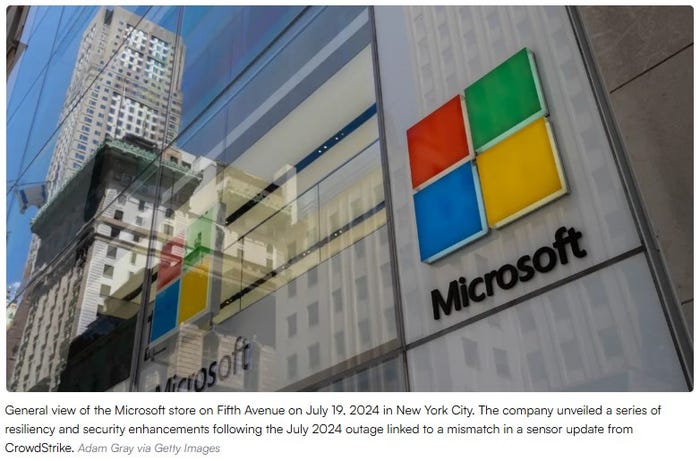A painful lesson
When telecommunications experts arrived in Haiti to aid the earthquake-recovery effort, they found unimaginable devastation. The event provides a stark reminder of why disaster-communications planning and resources are vitally important — something that every government entity should heed, because one never knows when and where disaster will strike.
July 1, 2010
On the afternoon of Jan. 12, 2010, the country of Haiti was rocked by a 7.0-magnitude earthquake that devastated the island nation, resulting in at least 200,000 fatalities and a similar number of citizens requiring amputations or other surgery as a result of injuries suffered during the natural disaster.
From a seismic standpoint, the Haitian earthquake paled in comparison to the massive 8.8-magnitude earthquake that hit the country of Chile the following month, but the Chile quake resulted in less than 600 deaths, as strong building codes meant fewer structures collapsed than did in Haiti.
Most observers believe the loss of life and property in Haiti proved to be so much greater compared with Chile, because the country — considered the poorest nation in the Western Hemisphere — was ill-equipped to deal with an event of that magnitude, as key infrastructure — such as the nation’s electrical grid and its land-mobile radio network — were deemed to be noticeably lacking even prior to the earthquake.
Soon after the earthquake, government representatives, private-sector personnel and humanitarian groups quickly moved to provide aid to Haiti, including the FCC. In fact, the commission’s response was unprecedented, said Mindel De La Torre, chief of the FCC’s international bureau.
“We, at the FCC, had worked a lot on domestic disasters, but we had never done anything internationally,” De La Torre said. “But [President Barack Obama] basically made a commitment to help Haiti as he would for a domestic disaster. That sort of changed the way we approached an international disaster.”
However, as aid arrived in Haiti, it was “very apparent” that the nation did not have a disaster-recovery plan in place, said Arnaldo Martinez, Motorola’s government and public-safety division sales manager for the Caribbean region. It was a classic case of poor timing, because the government was in the middle of developing such a plan when the earthquake hit, he said.
“They seriously were working on it — there were RFPs and bids for … an emergency-response system,” Martinez said. ��“Unfortunately, this took place before they were able to bring it to fruition. This just points out the importance of having a strong disaster-recovery plan. No matter how many resources you have, have something in place that will get a country through something like this.”
It could have been worse
Timing was not on Haiti’s side from a disaster-planning standpoint, but the fact that the earthquake hit shortly before 5 p.m. local time probably saved several hundred thousand lives, De La Torre said.
“Most all of the schools in Haiti were destroyed, but most all of them did not suffer the human catastrophe, because the kids were on their way home,” she said.
Similarly, because most government workers start their workdays early, relatively few were caught in the many government buildings that collapsed in the capital city of Port-au-Prince, De La Torre said.
“You think about the fact that they lost close to a half a million people in that earthquake, but it could have so easily been more,” she said.
This timing of the earthquake may have saved many lives, but the disaster still wreaked devastation. Several key government leaders were working late that day and died as the buildings they were in collapsed in the earthquake. Meanwhile, surviving government workers had to relocate to other sites as they tried to maintain a sense of order, despite the fact that “there’s not a record to be found in Haiti,” De La Torre said.
“It appeared that, going through Port-au-Prince, that every government ministry — from the presidential palace to the ministry of art and the IRS building — suffered extreme damage to the point where the buildings were probably uninhabitable,” said Tom Sullivan, chief of staff for the FCC’s international bureau. “In a country of Haiti’s status, that’s where the bulk of the communications is going, as well. So the government essentially lost a good portion of its communications capability right there.”
Certainly the government was not alone in its communications struggles. Broadcasters were hit especially hard, and only a handful managed to remain on the air. Meanwhile, the wireline telecom infrastructure was devastated.
“It was quite shocking when we went out to see the government-owned monopoly wireline company, and their 5-story building had literally pancaked,” De La Torre said. “You could see all these towers hanging in all this rubble — it turns out, that was where the cable landing was. Anything that made the network work was there, and it was just completely gone. It was very, very astounding.”
Of course, the most heart-wrenching scenes in the aftermath of the disaster involved the general citizenry, many of whom had to abandon their homes after the earthquake. Many opted to live in relief camps surrounding the fallen government buildings in Port-au-Prince.
“I wasn’t struck by the fact that the seat of government was in ruin,” said Bill Lane, chief engineer of the FCC’s public safety and homeland security bureau. “I was struck by the thousands of people across the street [who] had nowhere to go.”
Infrastructure challenges
By almost all accounts, the key problem for Haiti was the lack of adequate building standards.
“Their construction industry doesn’t have standards that are on a par with what we have in the United States. As a result, their construction is not nearly to the degree [needed] to withstand that type of an earthquake,” Motorola’s Martinez said. “The lesson learned, obviously, is that if you are going to be in a zone prone to significant earthquakes, you need to build facilities that are tolerant of that type of disaster.”
Indeed, the U.S. Embassy survived the earthquake relatively well, with the structure remaining in place and serving as a “little refuge” for federal teams providing aid to Haiti, De La Torre said.
“It shows you that building codes make a huge difference, because the buildings that were actually built to building codes really did survive the earthquake,” she said.
One of the biggest issues in the wake of Hurricane Katrina was the fact that the electrical grid failed, which in turn caused communications equipment to fail. Ironically, the power grid in Haiti also failed after the earthquake, but the impact was not nearly as great, because users are accustomed to it not working.
“They didn’t have a good electricity system to begin with,” De La Torre said. “Almost every operator at every single cell site had a generator and a backup generator, and they use their electrical grid as their backup-backup, because it hardly ever runs.”
Indeed, Haitian cellular operators were applauded by many for maintaining their networks and making the repairs necessary to enable communications. However, one power-related issue for the citizenry was the need for individuals to charge their cell phones, and the FCC worked with U.S. vendors to deploy multiple forms of charging stations (see photo).
Of course, as is the case after most disasters, capacity on the cellular networks proved to be a challenge, as inbound and outbound calls to Haiti “totally overloaded” the cellular networks, said Bob Nelson, satellite division chief of the FCC’s international bureau.
“E-mails typically would get out, although they would take some time,” he said. “Phone calls were nearly impossible, although that slowly improved after they were able to bring up more sites and demand decreased.”
The Haitian national police’s LMR network — a Motorola Smartzone 3.0 trunked system — struggled in the aftermath of the earthquake, primarily because the aging system was at less than 50% capacity before the earthquake as a result of Haiti lacking the resources in recent years to maintain the system properly, according to Motorola’s Martinez.
“They themselves maintained that system, so there were some sites that were not functional before the earthquake — there was some damage already given the fact that, at times, they didn’t have the resources to maintain the system,” he said. “Come the earthquake, we realized that the master site was completely nonfunctional.”
As a result, trunked communications were not an option after the earthquake. However, Martinez said Motorola installed a 10-channel repeater site to greatly enhance the system’s capacity for conventional communications.
Another problem faced in Haiti concerned the logistics involved in transporting equipment, goods and people in the aftermath of the earthquake. In a normal environment, traffic reportedly is a significant issue in Haiti. With many roadways unable to be used after the earthquake, getting from one location to another often proved to be a monumental challenge.
“In the [Southeast Asia] tsunami, the population was reduced because of the large number of deaths,” said Richard Lee, associate bureau chief for the FCC’s public safety and homeland security bureau, who witnessed the aftermath of both disasters firsthand. “In Haiti, the population was not evacuated; although there were a lot of people who died in the earthquake, there were still 1 million-plus people in the city and it was tough to get around. In Indonesia, most of the infrastructure — the housing and the roads — was gone, and there were no people walking around. That was a big difference I saw.”
Signs of hope
Despite the devastation in Haiti and the uphill challenges the nation faces in its recovery, all sources expressed encouragement about the experience there, primarily founded on the attitudes of the Haitian people.
“These people were so resilient,” Lee said. “Everything was taken from them, but they still persevered. I saw no acts of violence. Everyone I talked to was very nice. On Sundays, I was amazed that people would come out of these camp conditions in their Sunday best headed for church. I was down there for four Sundays, but every Sunday they were in their Sunday best.”
De La Torre echoed this sentiment, noting that when FCC teams arrived it seemed as if “people were milling around and there was no hope,” probably because they were still in a state of shock. However, the attitude of the Haitian citizenry changed dramatically by the time the FCC teams left.
“It was a very enlightening and uplifting experience, in the end, because we were able to see the telecommunications systems coming up and the amount of good that they do in a situation like that,” De La Torre said.”The first responder’s life is so much easier when the telecom system comes back up again. And the victims can be reached with that lifeline. Sometimes, people were asked whether they wanted bread or a phone, and they wanted a phone, depending on the situation.”



